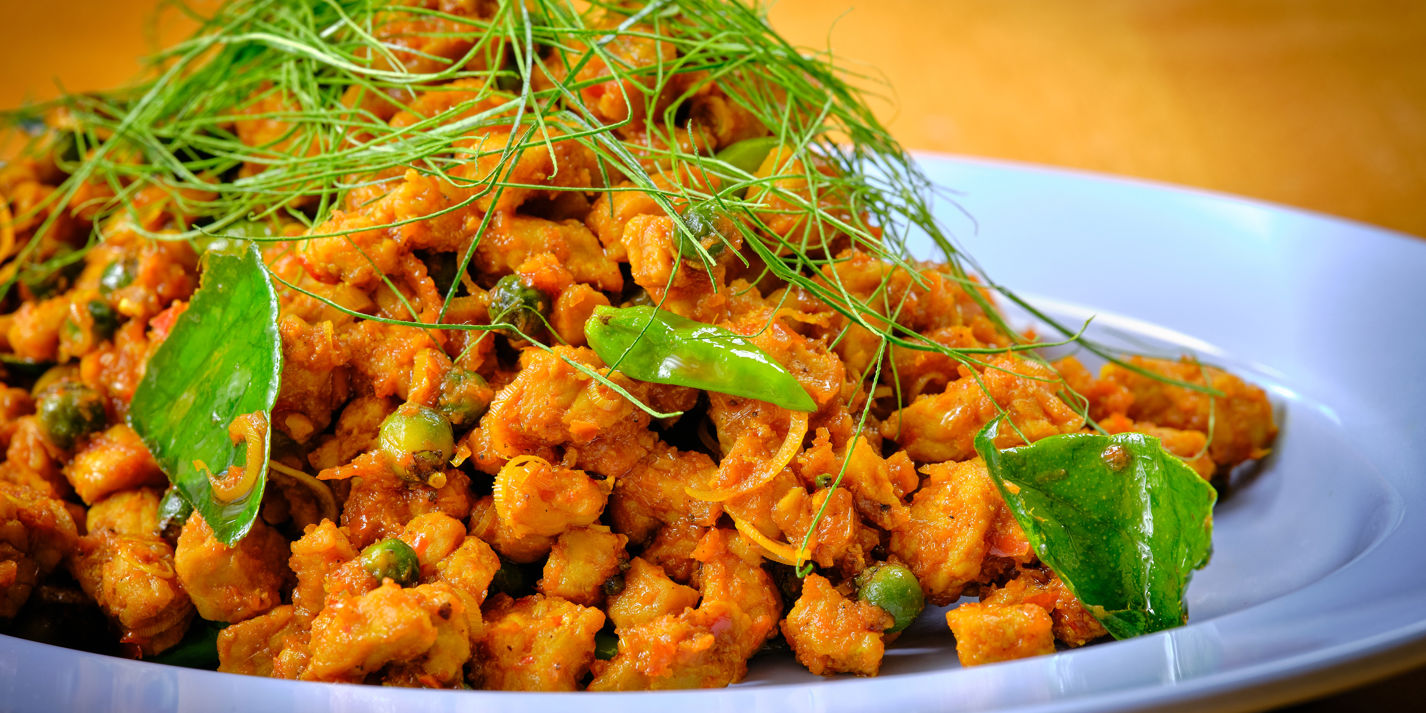Makrut lime leaves take their name from the Thai word magrood (มะกรูด), a heavily wrinkled and knobbly variety of lime that has a thick white pith and bitter juice. Makrut lime leaves grow in pairs, one stacked on top of the other lengthways, on spiny branches. When torn they have an intense fragrance synonymous with Thai food. They are also different from the leaves from regular lime trees, which aren’t suitable as a substitute. If you can’t get lime leaves however, the Thai food writer Pailin Chongchitnant recommends using lime zest instead.
Much like large chunks of lemongrass, lime leaves typically aren’t eaten whole, but are instead infused into broths or stir-fries, and then eaten around in the finished dish. However, if you remove the woody spines of the leaves, and cut them into a fine chiffonade, they also make a beautiful garnish for finished dishes.
Lime leaves used to be mostly available dry in the U.K., but are increasingly available frozen or even fresh. Fresh lime leaves will, naturally, have the best flavour, but frozen ones make a good substitute if fresh aren’t available, and are generally much cheaper than fresh ones. Dried lime leaves, although widely available, don’t have quite the same impact or fragrance – think of the difference between fresh chillies and chilli powder, or fresh parsley versus dried. It’s worth seeking out fresh or frozen leaves if you can.
They are of course delicious with savoury dishes like partridge curry or vegetarian jackfruit curry, as well as in desserts, where they are often paired with Southeast Asian flavours like mango or coconut.
Related collections
Makrut lime leaf
13 Recipes | Page 1 of 7
Makrut lime leaf
13 Recipes | Page 1 of 7



